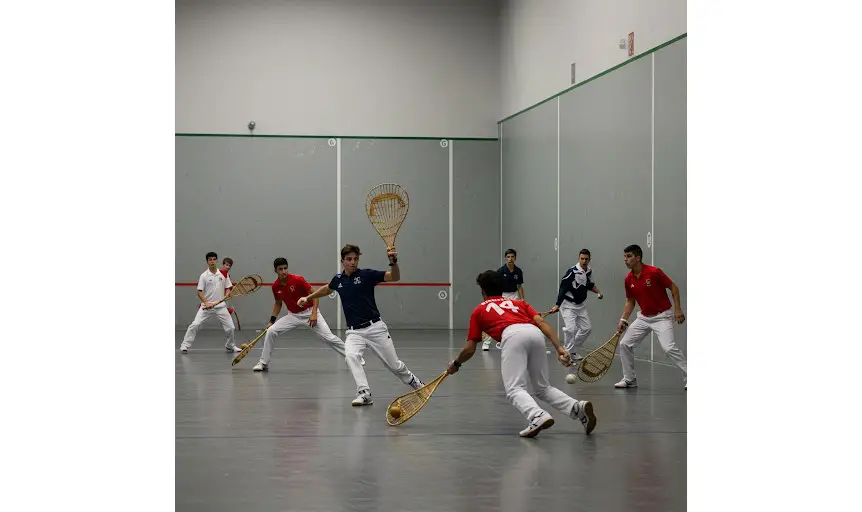
The Thrilling World of Jai Alai: Origins, Global Reach, and Modern Influence
Jai Alai, a sport often referred to as the fastest ball game in the world, has captivated audiences for centuries. Originating from the Basque region, this unique and electrifying game has evolved into a global phenomenon. Despite its niche appeal, it remains a testament to human agility, precision, and competitive spirit. In this article, we delve into the origins, global popularity, amateur play, professional leagues, social significance, and intricate rules of Jai Alai. Prepare to uncover the rich tapestry of this exhilarating sport.
The Origins and History of Jai Alai
It traces its roots to the Basque Country, a region nestled between Spain and France. The sport evolved from a traditional handball game called pelota, played in the open air against church walls. Over time, players introduced a curved wicker basket, known as a cesta, to enhance speed and control. This innovation transformed the game into the high-speed spectacle we recognize today.
In the 18th century, the sport began to formalize with purpose-built courts called frontons. By the late 19th century, it had reached Spanish colonies such as Cuba and the Philippines. The game’s introduction to the Americas fueled its popularity, particularly in Florida, where it became synonymous with entertainment and betting. As Jai Alai expanded, so did its cultural significance, intertwining with regional traditions and lifestyles.
The Global Popularity of Jai Alai
While it originated in Europe, it has gained international traction. In Spain and the Basque Country, it remains a cultural staple. Communities gather at local frontons to watch matches, which are often accompanied by festive celebrations.
In the Americas, the sport reached its zenith in the mid-20th century. Florida became a hub for professional Jai Alai, attracting tourists and locals alike. The sport also thrived in Mexico and the Caribbean, especially in Cuba, where it was a premier attraction until the 1960s. Even in Asia, particularly the Philippines, Jai Alai enjoyed a period of prominence.
Although its popularity has waned in some regions, it continues to captivate audiences in countries like France, Spain, and parts of Latin America. Modern efforts to revive the sport include televised tournaments and international exhibitions, aimed at introducing Jai Alai to new generations.
Amateur Jai Alai: Youth and Community Engagement
Amateur Jai Alai plays a vital role in sustaining the sport’s legacy. Across the Basque region, schools and community centers offer programs to teach children the fundamentals of Jai Alai. These initiatives foster a sense of pride in cultural heritage while cultivating athletic talent.
In the United States, amateur leagues in Florida and Connecticut provide opportunities for enthusiasts to participate. Youth leagues often emphasize sportsmanship, teamwork, and physical fitness. Many local organizations collaborate with schools to introduce it as an extracurricular activity, ensuring its accessibility to younger audiences.
Globally, amateur Jai Alai is also gaining traction in unexpected places. For example, small communities in South America and Southeast Asia have embraced the sport. Grassroots efforts often rely on passionate volunteers who work tirelessly to promote it through workshops, tournaments, and community events.
Professional Leagues and Competitive Landscape
The professional circuit of Jai Alai boasts a rich and dynamic history. Spain remains the epicenter of the sport, hosting prestigious tournaments that draw elite players. The Basque Pelota World Championships, held every four years, is a celebrated event where Jai Alai features prominently.
In the United States, Florida was once home to a thriving professional scene. Frontons in cities like Miami and Tampa showcased the sport’s most skilled players. Though the number of frontons has declined, efforts to revive professional Jai Alai include partnerships with sports networks and innovative league formats.
Cuba’s professional Jai Alai league, once a hallmark of Havana’s cultural identity, experienced a decline after the Cuban Revolution. However, recent discussions about restoring the sport’s professional presence have sparked optimism among fans and athletes.
The Social and Political Significance of Jai Alai
It transcends its identity as a mere sport, holding deep social and political implications. In the Basque Country, it serves as a symbol of regional pride and cultural identity. The sport’s traditions and rituals reflect the values of community, resilience, and craftsmanship.
In the Americas, Jai Alai’s connection to gambling brought both economic opportunities and controversies. In Florida, for instance, the sport became a cornerstone of the pari-mutuel betting industry. This relationship bolstered local economies but also invited scrutiny over regulatory practices.
Politically, Jai Alai has often mirrored societal shifts. In Cuba, the sport’s decline paralleled broader cultural changes following the revolution. Meanwhile, in Spain, it has occasionally been used as a platform for promoting Basque autonomy and heritage.
Socially, the sport fosters camaraderie and intergenerational bonds. In amateur leagues, players often share stories and traditions, preserving the cultural essence of Jai Alai. Professional leagues, on the other hand, provide a platform for athletes to inspire and entertain global audiences.
The Rules of Jai Alai
The rules are straightforward yet demand immense skill and precision. Matches are played on a three-walled court called a fronton. The court’s design allows the ball, or pelota, to reach speeds exceeding 180 mph.
Players use a cesta to catch and hurl the pelota against the front wall. The objective is to make the ball rebound in a way that the opponent cannot return it. A match is won by the first player or team to reach a pre-determined number of points.
Key rules include:
- The ball must be caught and thrown in one fluid motion.
- The pelota must hit the front wall directly before touching the floor.
- Points are awarded when the opponent fails to catch the ball or violates a rule.
It can be played in singles or doubles format. Doubles matches require seamless coordination between teammates, adding another layer of complexity to the game.
Conclusion
Jai Alai stands as a testament to the enduring appeal of athletic excellence and cultural heritage. From its humble origins in the Basque Country to its global journey, the sport continues to inspire awe and admiration. Whether through amateur leagues, professional tournaments, or community engagement, Jai Alai’s legacy remains vibrant.
As efforts to revive and sustain the sport gain momentum, it promises to enthrall new audiences. Its blend of speed, strategy, and tradition ensures its place as one of the most unique and captivating sports in the world.





